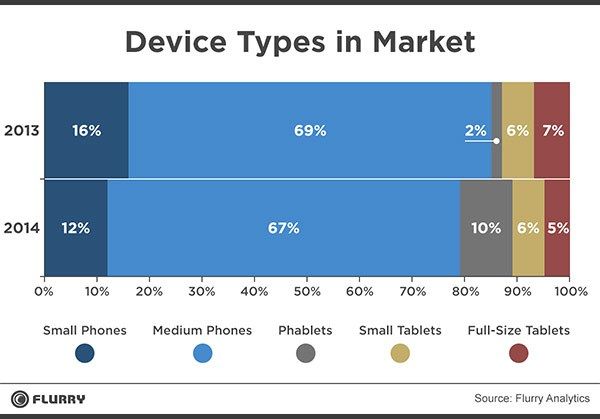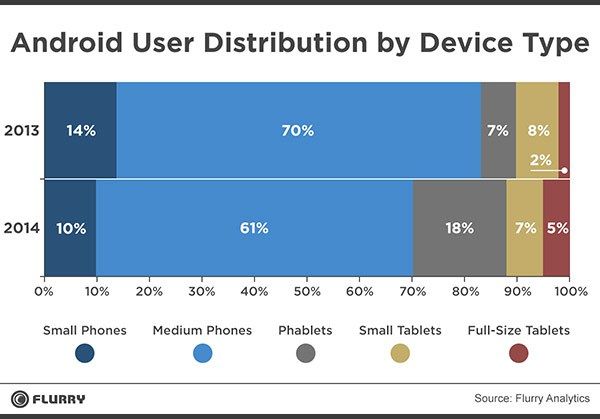With the announcement of two new iPhone 6 models this week — including a larger-than-usual Plus model that is Apple’s biggest phone to date — the question of whether or not “bigger” phone devices can make that much of an impact is definitely being passed around. According to data from apps analytics company Flurry, however, it appears the demand could be greater than anticipated.

The bigger phones, also going under the name “phablets” (part phone, part tablet), indicate that the devices are already picking up in popularity. Nearly six percent of the 60,000 active devices examined by the company are at least 5 to 7 inches when it comes to display size. That’s double the rate of the 3 percent reported in the previous year, indicating significant growth. Of course, there’s a ways to go, but progress is progress.
Bigger devices also provide more usage than smaller ones, according to the company. Sessions show that 11 percent of devices are used more often when it comes to application sessions, compared to the less than 3 percent from the year before. This is particularly true when it comes to reading things, such as documents or eBooks.

Android “phablets” have shown impressive growth over the past year, rising up from 7 percent in the previous year to 18 percent for this year, with the numbers continuing to grow. That took a significant chunk out of “medium”-sized phones, which dropped from 70 percent the year before to this year’s 61 percent.
Availability — and accessibility — of larger devices are making them more popular as well, according to the report. The Samsung Galaxy S5 and Note were amongst the most noteworthy, although it’s likely that the iPhone 6 Plus will join that line-up when it releases next week.

This is a large turn-around from when larger devices were introduced back in 2011, when the original Samsung Galaxy Note wasn’t taken so seriously. It’ll be interesting to see where the era of larger phones, or “phablets,” takes us once the iPhone 6 Plus arrives.
Source: GigaOm

